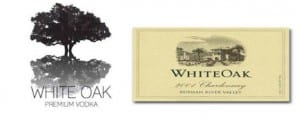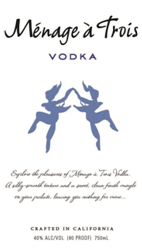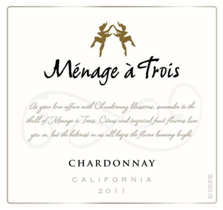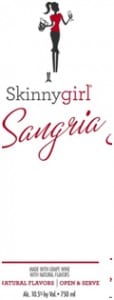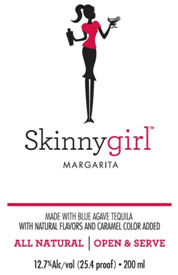CalRecycle To Host Webinar for Small Wineries (Limited to 1,000 Attendees)
As mentioned in our recent blog post, Compliance With Bottle Bill Just One Month Away for Wine and Spirits, California law changed on January 1, 2024, to include wine and distilled spirits in California’s Beverage Container Recycling Program. California wineries and distilleries will now need to register with CalRecycle, submit monthly reports, pay certain fees, and make sure their labels include an appropriate recyclability message from July 1, 2025.
CalRecycle will host a 2-hour webinar on February 23, 2024 aimed at small wineries to explain how the changes will affect them. The webinar will also include a demonstration on how to use the Division of Recycling Integrated Information System (DORIIS) for monthly reporting and payment of fees. The webinar is limited to 1,000 attendees, so register as soon as possible at https://us02web.zoom.us/meeting/register/tZYkd-6upj4tEtCVEASeUimnDkRGDsY7glXV. The webinar will conclude with a Q&A session.
For questions about the webinar, please contact the CalRecycle Registration Units via email at [email protected] or via phone at 916-323-1835.
Compliance With Bottle Bill Just One Month Away for Wine and Spirits
COMPLIANCE WITH BOTTLE BILL JUST ONE MONTH AWAY FOR WINE AND SPIRITS
On January 1, 2024, California’s container recycling deposit system (referred to often as the “Bottle Bill”) will expand to include wine, spirits, and wine and spirits coolers (regardless of ABV). Below is a brief overview of what wineries, distilleries, importers and wholesalers of wine and spirits need to do to comply!
Register with CalRecycle as a Beverage Manufacturer and/or Distributor
Register with CalRecycle as soon as possible to prepare for monthly payment and reporting requirements beginning January 1, 2024.
- California-Based: California wineries and distilleries, and importers of wine or spirits into California, will need to register as a “Beverage Manufacturer.” They will also need to register as a “Distributor” if they sell to retailers (whether on-sale or off-sale), restaurants, bars, or directly to consumers.
- Out-of-State: Out-of-state wineries and distilleries with a California Wine Direct Shippers Permit, and that sell directly to California consumers, will need to register as a “Beverage Manufacturer” and a “Distributor.”
Processing Fees and California Redemption Value (CRV)
- Beverage Manufacturers Pay Processing Fees: Beverage manufacturers (as defined above in bold) will need to pay CalRecycle processing fees for each wine or spirits beverage they sell to wholesalers or retailers (whether on-sale or off-sale) in California from January 1, 2024. These fees depend on the type of container material. The fee per glass bottle is $0.00576. Their first report for January 2024 will be due on March 10, 2024.
- Distributors Pay CRV: Distributors (as defined by CalRecycle and noted above) will need to pay CalRecycle a CRV for each wine or spirits beverage they sell to consumers, restaurants, or bars from January 1, 2024. There is an exemption for bottles opened at the winery or distillery for tasting purposes. These fees depend on the size of the container. For bottles smaller than 750 mL (less than 24 fluid ounces), the CRV is 5 cents/bottle. For bottles 750 mL or larger (24 fluid ounces or more), the CRV is 10 cents/bottle. For boxes, bladders, pouches, or similar containers (regardless of size), the CRV is 25 cents/container. Distributors don’t need to pay CRV for alcoholic beverages opened and poured for on-site consumption at CA ABC licensed tasting rooms. Distributors can keep 1.5% of the processing fees as an administrative fee, which CalRecycle will automatically calculate. Distributors’ first report for January 2024 will be due on February 29, 2024.
CRV Statements on Bottles
- CRV Statement: From July 1, 2025, all wines and spirits containers sold in California (except those containers filled and labeled before January 1, 2024) must be labeled with one of five CRV statements: “CA Redemption Value,” “California Redemption Value,” “CA Cash Refund,” “California Cash Refund,” or “CA CRV.”
- Exempt Containers: All wines and spirits containers sold in California that were filled and labeled before January 1, 2024 are exempt from and not subject to the labeling requirements of the Bottle Bill. No new labels or statements will have to be added to these products.
- Appearance of Statement: The CRV statement must be clearly, prominently, and indelibly marked and can be added on the actual label or by sticker (but not on aluminum cans), stamp, embossment, or other similar method. The Bottle Bill also has other, very prescriptive rules about the appearance of the CRV statement.
For more information about the Bottle Bill, see our previous blog post or email Bahaneh Hobel, Alexander Mau, or Theresa Barton Cray.
Updates to Products Subject To California’s Bottle Bill
On October 13, 2023, Governor Gavin Newsom signed California Senate Bill 353, which made a significant change to products that will be subject to the California Beverage Container Recycling and Litter Reduction Act (known as the Bottle Bill).
Now, only products filled and labeled after January 1, 2024 will be subject to the CRV labeling requirements of the Bottle Bill. Any products (whether domestic or imported) that were filled and labeled prior to that time will be exempt. This legislative fix did not make any changes to the change the reporting or payment requirements of the Bottle Bill.
Please see below for a full summary of the Bottle Bill and contact DP&F with any questions.
With the passage of Senate Bill No. 1013, beginning on January 1, 2024, wine and spirits will be included in California’s state container deposit system established by the California Beverage Container Recycling and Litter Reduction Act (known as the “Bottle Bill”). As such, wineries and distilleries will now be required to comply with the Bottle Bill’s CA Redemption Value (CRV) payment and reporting obligations beginning January 1, 2024, and CRV labeling requirements for all wine and spirits filled and labeled after January 1, 2024 and sold after July 1, 2025. Beer and certain other non-alcoholic beverages were already previously covered by the Bottle Bill.
Importantly, because all wines and spirits (that were not filled and labeled after January 1, 2024) sold in California after July 1, 2025 must be labeled with some type of approved CRV statement, producers should start including this information on their bottles and/or labels as soon as possible for all products to be offered for sale on or after January 1, 2025.
Below we have included a brief summary of the rules applicable to wines and spirits under Bottle Bill, the new registration and payment obligations, and labeling changes required to comply with the new laws.
TYPES OF BEVERAGES:
The Bottle Bill applies to beer, malt beverages, wine, spirits, wine and spirit coolers (regardless of ABV), and certain other non-alcoholic beverages intended for sale in California. Section 14504 and 14560.
CA REDEMPTION VALUES (CRV): Section 14560
- For bottles smaller than 750 mL (less than 24 fluid ounces), the CRV is 5 cents/bottle.
- For bottles 750 mL or larger (24 fluid ounces or more), the CRV is 10 cents/bottle.
- For boxes, bladders, pouches, or similar containers (regardless of size), the CRV is 25 cents/container.
REGISTRATION & PAYMENT OBLIGATIONS BEGINNING JANUARY 1, 2024:
- All wineries and distilleries should register with CalRecycle as soon as possible to prepare for payment and reporting requirements beginning 1/1/2024 (information regarding registration can be found here).
- All producers and importers of wine and distilled spirits should register as a Beverage Manufacturer. Brand owners that contract with producers for the manufacture of wine or distilled spirits are not considered Beverage Manufacturers.
- Any wineries and distilleries that sell wine or spirits in California Direct to Consumer or Direct to a Retailer (for wine) should also register as a Distributor.
2. Report and pay the applicable CRV to CalRecycle.
- CRV is due and payable for every beverage container (other than a refillable beverage container) sold or transferred to a dealer or consumer in CA. There is an exception for products served in a tasting rooms, discussed below. 1.5% holdback for administrative fee is permitted.
- Report due last day of month following the month of sales, even if no sales or transfers. First report for January 2024 is February 29, 2024.
- The winery or distillery may pass on the CRV cost to consumers (as the consumers can return the bottles to a recycling center for the redemption). Section 14560
3. Report and pay the applicable Processing Fee.
- The processing fee is paid on all containers a winery or distillery sells or transfers in CA, whether to wholesalers, retailers, or consumers. Section 14575(g)
- Report and payment due 10th day of 2nd month following the month of sales, even if no sales or transfers. First report and payment for January 2024 is due March 10, 2024.
- The processing fee is variable depending on container material (size does not matter) and changes each calendar year, but is currently 0.452 cents/glass bottle. The Wine Institute has noted that the hope is for the processing fee to be reduced to zero.
LABELING OBLIGATIONS FOR ALL WINES AND SPIRITS SOLD AFTER JULY 1, 2025:
- All wines and distilled spirits containers sold in California that were filled and labeled before January 1, 2024 are exempt from and not subject to the labeling requirements of the Bottle Bill. No new labels or statements will have to be added to these products.
- All wines and distilled spirits containers sold in California after July 1, 2025 (except those containers filled and labeled before January 1, 2024) must be labeled with: “CA Redemption Value,” “California Redemption Value,” “CA Cash Refund,” “California Cash Refund,” or “CA CRV”.
- The CRV statement must be clearly, prominently, and indelibly marked and can be added on the actual label or by sticker (not on aluminum cans), stamp, embossment, or other similar method. Labeling size and location requirements are set forth below: CCR 2200(b).
- For glass and plastic, the CRV statement must be on the container body label or secondary label with:
- Option 1: Along the bottom edge of the container body label in minimum lettering size at least 3/16 inch in height.
- Option 2: On or in a secondary label minimum lettering size at least 3/16 inch in height.
- Option 3: On a container body label or secondary label with contrasting colors with legible lettering size at least 1/8 inch in height.
- For aluminum, the CRV statement must be on the top lid:
- for tops greater than 2 inches in diameter, the CRV statement must be 3/16” in height; and
- for tops 2 inches or less in diameter, the CRV statement must be 1/8” in height.
- Requirements for box, bladder, and pouch containers to be determined.
4. Senate Bill No. 1013 also revised Section 14561(d) of the Bottle Bill to allow for CRV labeling by the inclusion of a scan code or quick response (QR) code on the container. This new language is currently under review by CalRecycle.
EXCEPTION FOR TASTING ROOM SALES:
If any wines or spirits are sold for on-site consumption in a tasting room, then those products are exempt from the Bottle Bill’s requirements.
For more information regarding Bottle Bill compliance, please contact Bahaneh Hobel at [email protected] or Theresa Barton Cray at [email protected].
Effective January 1, 2024, CA Wineries and Distilleries Will Have Reporting and Payment Obligations to CalRecycle Under the Bottle Bill
With the passage of Senate Bill No. 1013, beginning on January 1, 2024, wine and spirits will be included in California’s state container deposit system established by the California Beverage Container Recycling and Litter Reduction Act (known as the “Bottle Bill”). As such, wineries and distilleries will now be required to comply with the Bottle Bill’s CA Redemption Value (CRV) payment and reporting obligations beginning January 1, 2024, and CRV labeling requirements for all wine and spirits sold after July 1, 2025. Beer and certain other non-alcoholic beverages were already previously covered by the Bottle Bill.
Importantly, because all wines and spirits sold in California after July 1, 2025 must be labeled with some type of approved CRV statement, producers should start including this information on their bottles and/or labels as soon as possible for all products to be offered for sale on or after January 1, 2025.
Below we have included a brief summary of the rules applicable to wines and spirits under Bottle Bill, the new registration and payment obligations, and labeling changes required to comply with the new laws.
TYPES OF BEVERAGES:
The Bottle Bill applies to beer, malt beverages, wine, spirits, wine and spirit coolers (regardless of ABV), and certain other non-alcoholic beverages intended for sale in California. Section 14504 and 14560.
CA REDEMPTION VALUES (CRV): Section 14560
- For bottles smaller than 750 mL (less than 24 fluid ounces), the CRV is 5 cents/bottle.
- For bottles 750 mL or larger (24 fluid ounces or more), the CRV is 10 cents/bottle.
- For boxes, bladders, pouches, or similar containers (regardless of size), the CRV is 25 cents/container.
REGISTRATION & PAYMENT OBLIGATIONS BEGINNING JANUARY 1, 2024:
- All wineries and distilleries should register with CalRecycle as soon as possible to prepare for payment and reporting requirements beginning 1/1/2024 (information regarding registration can be found here).
- All producers and importers of wine and distilled spirits should register as a Beverage Manufacturer. Brand owners that contract with producers for the manufacture of wine or distilled spirits are not considered Beverage Manufacturers.
- Any wineries and distilleries that sell wine or spirits in California Direct to Consumer or Direct to a Retailer (for wine) should also register as a Distributor.
2. Report and pay the applicable CRV to CalReycle.
- The winery or distillery may pass on this cost to consumers (as the consumers can return the bottles to a recycling center for the redemption). Section 14560
- The processing fee is variable depending on container material (size does not matter) and changes each calendar year, but is currently 0.452 cents/glass bottle. The Wine Institute has noted that the hope is for the processing fee to be reduced to zero.
3. Report and pay the applicable Processing Fee.
- The processing fee is paid on all containers a winery or distillery sells, whether to wholesalers, retailers, or consumers. Section 14575(g)
- The processing fee is variable, but is currently 0.426 cents/glass bottle or for new containers, 0.574 cents/container. The Wine Institute has noted that the hope is for the processing fee to be reduced to zero.
LABELING OBLIGATIONS FOR ALL WINES AND SPIRITS SOLD AFTER JULY 1, 2025:
- All wines and distilled spirits containers sold in California after July 1, 2025, except those containers filled and labeled before January 1, 2024, must be labeled with: “CA Redemption Value,” “California Redemption Value,” “CA Cash Refund,” “California Cash Refund,” or “CA CRV”.
- The CRV statement must be clearly, prominently, and indelibly marked and can be added on the actual label or by sticker (not on aluminum cans), stamp, embossment, or other similar method. Labeling size and location requirements are set forth below: CCR 2200(b).
- For glass and plastic, the CRV statement must be on the container body label or secondary label with:
- a text height of 3/16”, or
- a minimum text height of 1/8” and in a contrasting color to the background and nearby text.
- For aluminum, the CRV statement must be on the top lid:
- for tops greater than 2 inches in diameter, the CRV statement must be 3/16” in height; and
- for tops 2 inches or less in diameter, the CRV statement must be 1/8” in height.
- Requirements for box, bladder, and pouch containers to be determined.
3. Currently, there is no exemption for wines or spirits labeled before July 1, 2025. While the Wine Institute is working on legislation to create an exemption for wines labeled before January 1, 2024, wineries and distilleries should start including the required labeling on all applicable containers as soon as possible.
4. Senate Bill No. 1013 also revised Section 14561(d) of the Bottle Bill to allow for CRV labeling by the inclusion of a scan code or quick response (QR) code on the container. This new language is currently under review by CalRecycle.
EXCEPTION FOR TASTING ROOM SALES:
If any wines or spirits are sold for on-site consumption in a tasting room, then those products are exempt from the Bottle Bill’s requirements. Any products sold for offsite consumption are subject to the requirements of the Bottle Bill. Section 14510.
Post revised October 18, 2023 to reflect labeling exemption established under California Senate Bill 353.
For more information regarding Bottle Bill compliance, please contact Bahaneh Hobel at [email protected] or Theresa Barton Cray at [email protected].
Trademark for Wine vs. Vodka: Court Issues Preliminary Injunction
On March 9, 2015, the U.S. District Court for the Central District of California issued a preliminary injunction to White Oak Vineyards & Winery, LLC against White Oak Spirits LLC enjoining the spirits producer from use of the term WHITE OAK on vodka based on likelihood of consumer confusion with the mark WHITE OAK for wine. A copy of the decision may be found here.
While we have frequently written about the trend at the USPTO to find wine and spirits to be related goods for purposes of finding likelihood of confusion, we have not seen the same prevalence of findings in federal court decisions related to infringement. Thus, this decision is notable in such regard.
The marks in this case were virtually identical: WHITE OAK for wine vs. WHITE OAK PREMIUM VODKA for vodka. While defendant argued that the use of the words “premium vodka” with WHITE OAK would distinguish its brand from that of Plaintiff, the court found that consumers would focus on the distinctive portion – WHITE OAK – and give little consideration to the generic terms. Defendant also failed to convince the court that the distinctive labels of the products (see below) would allow consumers to distinguish between the goods, mainly because the court found that the products may also be ordered from wine lists in restaurants and bars or through other avenues where the labels would not be visible.
As far as the relatedness of the goods, the court noted that consumers would not believe one product to be the other, but rather that consumers may believe that the two products came from the same source or producer. The court cited to evidence submitted by plaintiff of the Napa producer of DOMAINE CHARBAY which produces both wine and spirits under the same mark. We have also noted in this blog that there is a current trend of the same brands appearing on wines and spirits which reflects a changing landscape on the issue of relatedness under trademark law. Below are a few more examples:
What is notable about the court’s opinion is that it expressly stated that it was not establishing a per se rule as to the relatedness of wine and spirits and specifically noted that on the totality of the facts – “namely, that the names of the two products are identical – the goods are sufficiently related for a likelihood of confusion to arise.” So does this mean that spirits and wine will be found to be related when the marks are not identical? Maybe. It will depend on the marks and the degree of similarity. However, what is clear is that going forward wineries and distilleries should not rely on any perceived marketplace differences between their goods to adopt marks that are identical to marks on goods in the other sector.
Two other takeaways from this opinion: 1) the distillery first approached the winery for a consent to register its mark after its trademark application was refused by the USPTO and winery’s response was a demand to stop use; a lesson as to potential implications in approaching other parties for consent agreements; and, 2) for all of you trademark geeks, the court issued a preliminary injunction despite the recent Ninth Circuit decision in Herb Reed Enterprises requiring that irreparable harm be grounded in evidence and not be speculative; while the court noted that harm could not be presumed, the court found that plaintiff’s loss of control over its mark would cause irreparable harm, which is essentially what the presumption once was ….


